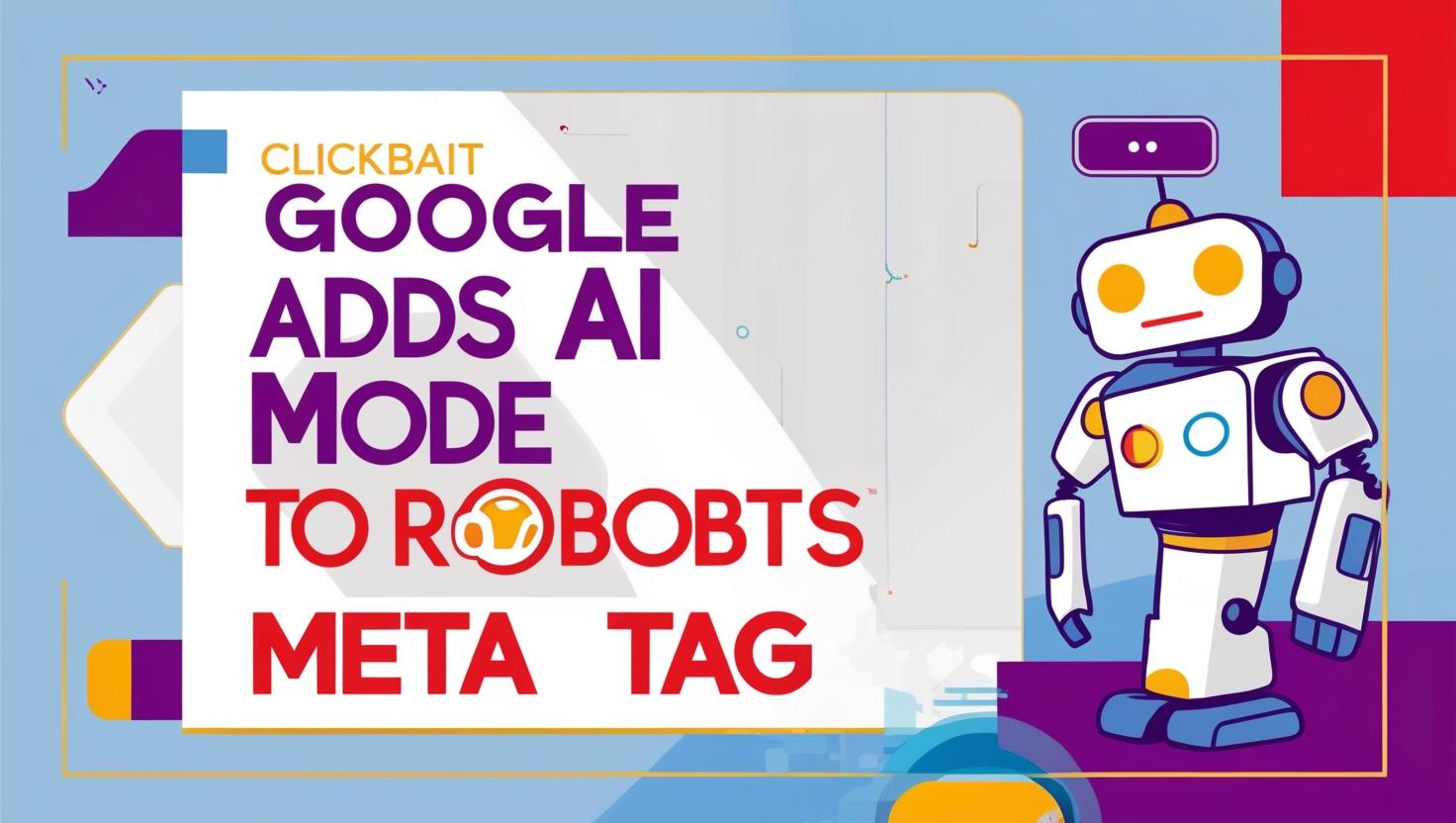Google has just expanded its documentation on the robots meta tag to include a new ‘AI Mode.’ This will help webmasters have stronger control over the use of their data content in AI-driven search results pages. This change can be seen as a continuation of Google’s efforts to link AI more closely with the search engine functionalities by applying more conversational and in-depth answers to user queries.
What Is The Robots Meta Tag About?
The robots meta tag is a piece of HTML code that allows the website owner to tell search engine crawlers whether and how to index and display the site’s content in search results. The usage of the robot’s directives in the meta tag makes it possible to have control over aspects such as snippet generation, image indexing, and nowadays, the new feature also includes the textual inclusion in AI-generated overviews.
What Is AI Mode in the Robots Meta Tag?
Google’s new AI Mode is a directive designed to give website owners more control over how their content is used by AI-powered tools, including Google’s own AI systems like Gemini and Search Generative Experience (SGE). This update is part of Google’s broader effort to address concerns about how AI models scrape and use web content.
With the AI Mode tag, you can specify whether you want your content to be used for training AI models or generating AI responses. Here’s how it works:
ai:all: This allows AI systems to use your content for training and generating responses.ai:none: This blocks AI systems from using your content for training or generating responses.
Why Is This Update Important?
The rise of AI has sparked a lot of debate in the digital marketing world. On one hand, AI tools like ChatGPT and Google Bard rely on vast amounts of web data to function. On the other hand, website owners are concerned about their content being used without proper attribution or compensation.
Google’s AI Mode update is a response to these concerns. It gives website owners more transparency and control over how their content is used by AI systems. Here’s why it matters:
- Protecting Your Content: If you don’t want AI systems to use your content for training or generating responses, you can now block them with the
ai:nonetag. - Embracing AI Opportunities: If you’re open to AI systems using your content, the
ai:alltag ensures your site remains part of the AI ecosystem. - Future-Proofing Your SEO: As AI becomes more integrated into search engines, understanding and using these tags can help you stay ahead of the curve.
What It Means For Website Developers And Content Creators?
With the integration of ‘AI Mode,’ it’s crucial for website owners and content creators to understand how their content might be utilized in these AI-generated responses. The updated robots meta tag documentation now includes directives that allow publishers to control their content’s appearance in AI overviews and ‘AI Mode.’ By setting specific parameters, webmasters can prevent their content from being used directly in AI-generated snippets, thereby maintaining control over their material’s distribution and presentation.
How to Implement the AI Mode Tag
Adding the AI Mode tag to your website is straightforward. Here’s an example of how you can include it in your HTML:
<meta name="robots" content="ai:none">
Or, if you want to allow AI systems to use your content:
meta name="robots" content="ai:all">
You can also combine it with other directives, like noindex or nofollow, depending on your needs. For example:
<meta name="robots" content="noindex, ai:none">
This tells search engines not to index the page and not to use its content for AI training or responses.
What Does This Mean for SEO?
The introduction of the AI Mode tag has significant implications for SEO. If you block AI systems from using your content (ai:none), your site may not appear in AI-generated responses or tools like Google Bard. This could reduce your visibility in AI-driven search experiences.
Allowing AI systems to use your content (ai:all), your site could become a go-to source for AI-generated answers, potentially driving more traffic and authority. But this may make your intellectual property vulnerable to risks.
It is better to audit your content well before arriving at a decision. For instance, you might allow AI to use blog posts but block access to proprietary data or paid content.
Conclusion
Google’s introduction of ‘AI Mode’ and the corresponding updates to the robots meta tag documentation signify a significant shift in how search results are generated and presented. Website owners and content creators can make use of this to maintain control over their content’s utilization in AI-generated search features, ensuring that their material is presented in a manner consistent with their objectives.



